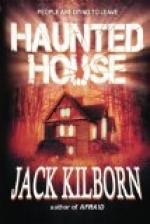|
This section contains 567 words (approx. 2 pages at 300 words per page) |

|
Writers use many kinds of evidence in addition to those described above to support their hypotheses. The following are some common examples:
Anecdotal evidence. An anecdote is a brief story. Eyewitness testimony, described above, is one type of anecdotal evidence. A legend or traditional story that is related to the topic under discussion is another. Authors use anecdotes to illustrate a point or make an analogy.
Anecdotal evidence contrasts with hard evidence (including facts, physical evidence, and statistical evidence), which investigators usually consider more significant than anecdotal evidence because it is easier to prove or disprove. However, anecdotal evidence can sometimes be strong, especially when multiple witnesses report the same thing.
Statistical or numerical evidence. Statistical data can be important in determining the significance of an event. For example, certain haunting symptoms recurring in the same part of a building or at...
|
This section contains 567 words (approx. 2 pages at 300 words per page) |

|




